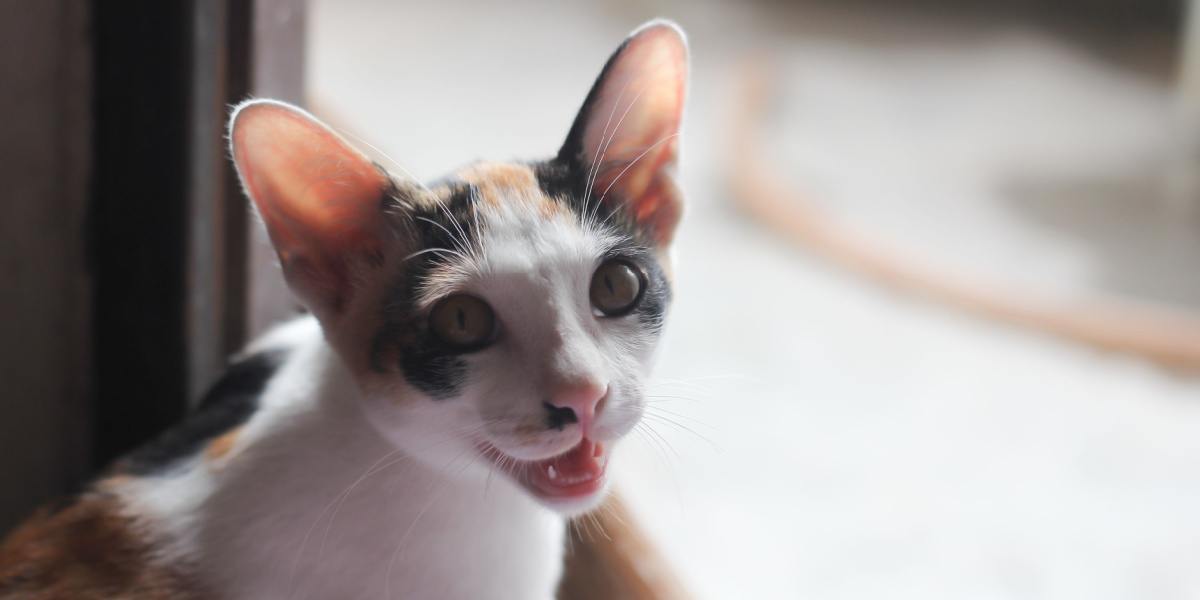
Cat ownership is not quite as simple as just throwing down some bowls of food and water. We all have a duty of responsibility to keep our cats safe, satisfied, and happy, and that might entail some tricky decisions. There are both pros and cons to letting cats outside, and these include some real safety hazards.
Keeping cats indoors or letting them outside is a personal choice, with pros and cons on each side. Cats kept strictly indoors still need physical and mental stimulation, and the ability to express natural behaviors such as play, scratching, and scent marking. Engage your indoor cat's body and mind with active play and additional enrichment such as cat trees, scratching posts, and puzzle feeders.Key Takeaways
If your cat is meowing desperately to be let out, there are some other options that balance safety with your cat’s desire for freedom. However, bear in mind that excessive vocalization can be a symptom of some behavioral and medical concerns rather than just a desire for fresh air.
Should I Let My Cat Outside?
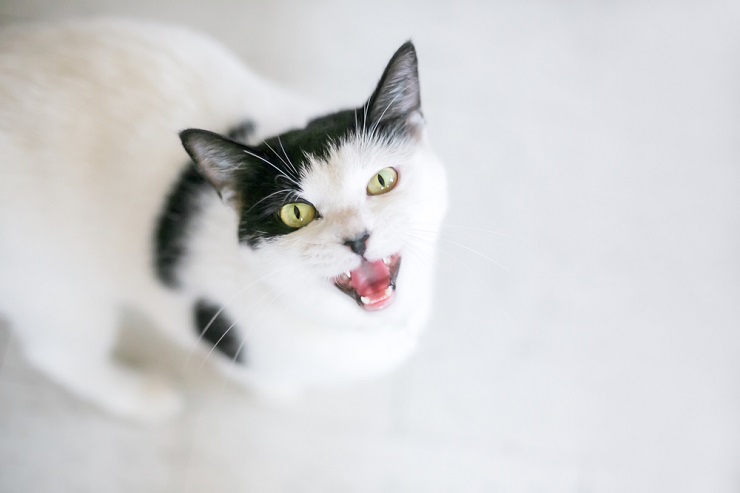
Keeping cats indoors or letting them out is a personal decision, with pros and cons on each side.
There is no perfect answer as to whether you should let your cat outside, and there are also multiple options to balance safety with outdoor access. Let’s have a look at the pros and cons of cats being allowed to roam.
The Pros
There are three main advantages for cats who are allowed to roam free. These benefits include the following.
1. Exercise
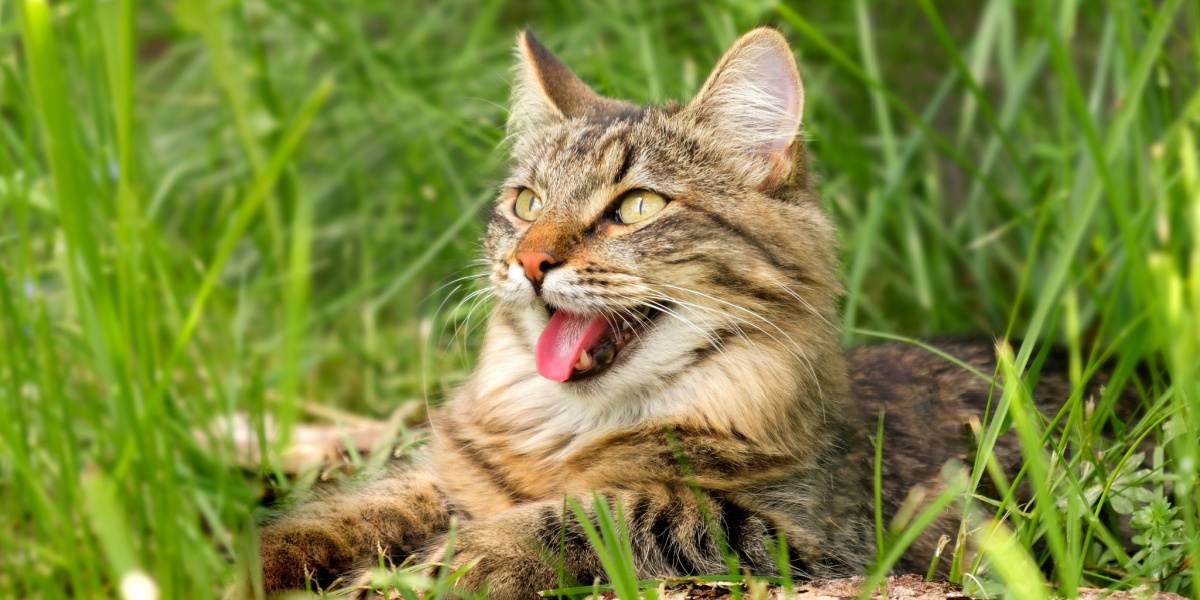
Exploring outside is a good way for cats to get more exercise.
Cats that can go outdoors have a naturally larger territory than those confined to an indoor environment. They are also likely to spend more time in active play and exploration, rather than the more sedentary cat behavior you might find normal for indoor cats (cats do love to nap!).
Also Read: How Do Cats Mark Their Territory?
2. Enrichment

Cats that go outside are often less bored than cats kept inside without proper enrichment opportunities.
Outdoor cats have a wide range of both physical and mental stimulation constantly. Their senses are continually challenged by the changing sights, sounds, smells, and textures of the natural world around them, as well as the physical exercise involved in exploration, such as climbing fences or jumping over obstacles.
Also Read: The 5 Best Outdoor Cat Houses
3. Instinctive Behaviors

Although outdoor cats get the benefit of expressing their natural behaviors, unwanted predation of local wildlife is an issue when cats are allowed to hunt.
Cats are highly motivated to perform certain behaviors, such as scratching, scent marking, and hunting behaviors. This is why they might scratch at your furniture or pounce on your feet if not provided with suitable alternatives. Outside, cats are free to express these natural behaviors. Also Read: How Do Cats Hunt?
The Cons

Statistically, cats are safest when kept indoors.
The disadvantages to allowing cats outside are mostly related to their safety. Cats are crepuscular, meaning they are most active at dawn and dusk, which unfortunately coincides with more dangerous times to be outside.
Here are some of the major risks for outdoor cats:
- Traffic accidents
- Parasite infection
- Injuries from other wildlife or from neighboring pets such as large dogs
- Transmittable diseases from other cats, such as FIV (feline immunodeficiency virus) or FeLV (feline leukemia virus)
- Unwanted pregnancy if you own an unspayed female cat
- Exposure to toxic plants, pesticides, and antifreeze
- More vulnerable to animal cruelty, theft, or confiscation
- Potential of harm to local wildlife populations if your cat is a hunter
Also Read: Cat Intestinal Parasites: Causes, Symptoms, & Treatment
How Can I Keep My Cat Happy Indoors?

Cats kept strictly indoors need a lot of environmental enrichment for their physical and mental well-being.
If you’ve weighed up the risks and would prefer to keep your cat safe and sound inside, it’s still important to look after their well-being. If your cat meows at doors and windows constantly, they are trying to communicate that their needs are not being met. Here are some ways to spice up your cat’s routine, prevent boredom and frustration, and keep them happy, enriched, and healthy.
1. Enrichment

Offer your indoor cat things to explore and play with to keep life interesting.
If your cat wants to go out, they might be missing out on one of the three main benefits of outdoor life: exercise, enrichment, and the ability to perform natural behaviors. Luckily, there are methods of providing these crucial needs in the safety of the home. It is not enough to provide a full food bowl and water bowl; your cat has other needs to be met.
Set aside time to spend with your cat, and engage in both physically and mentally stimulating activities with them, such as active play, grooming, petting, and even basic training using treats as a reward for good behavior. It is easy to let these habits slip, so set aside specific times to engage with your cat every day, to keep them active and stimulated.
More passive entertainment is also possible. Provide a scratching post, a cat tree or perch for climbing, and some puzzle toys or treat balls for quieter enrichment. Your cat needs to be kept occupied to prevent boredom, and being able to perform key behaviors such as climbing, playing, and scratching will prevent frustration.
If your cat is left alone for long periods, consider a pet sitter to pop in and spend some time with them. Automatic feeders that dispense food both at feeding times and at other random opportunities also provide some excitement in your cat’s day.
Also Read: The 5 Best Interactive Cat Toys for Bored Cats
2. Safe Outdoors Time

Restricted access outside offers cats safe opportunities to enjoy sights, sounds, and smells outdoors.
There is a middle ground between having a fully indoor cat and one who is allowed to free roam. There are now options to provide your cat with some safe outdoor time.
Some cats will accept being trained to wear a harness and leash. This process must be taken very slowly and carefully—you cannot expect a cat just to tolerate a strange item being placed on them and then being expected to walk nicely.
Make sure the harness is secure and well-fitted, and begin by just placing it on the floor and letting your cat explore it. Gradually progress to fastening it on your cat for very short periods. Only attempt the leash and an outdoor trip once your cat is fully comfortable with wearing the harness.
Pet carriers can be used to allow your cat to experience some of the outdoor scents and sounds. Again, care must be taken to accustom your cat to the carrier first, as some will not enjoy being confined.
An enclosed outdoor area or “catio” is becoming a popular choice. This is an ideal middle ground, as it allows cats the freedom to be active and explore nature but keeps them (and local wildlife) safe.
Also Read: Is Cat TV Good For Cats?
Why Else Is My Cat Meowing?

Excessive meowing can be unrelated to wanting to go outside.
If your cat is yowling at the window or door, it might seem obvious that they want to go out, and are performing this excessive vocalization to make their intentions clear. However, your cat may be perfectly content inside, as there are plenty of other reasons why your cat might be meowing.
Cats (both females and males) vocalize a lot when they want to mate. A kitten will reach sexual maturity from around 4 months of age. Female cats begin their heat cycle in the lighter, warmer months. During this time, yowling and other loud vocalizations are common from cats that have not been neutered and are looking to breed.
Some illnesses can cause a change in your cat’s meowing habits. Cognitive dysfunction (similar to human dementia) can cause mental confusion, resulting in excessive meowing at odd times, changes to sleep cycles, and altered interactions with their owners. An overactive thyroid also commonly results in skittish behavior and an increase in vocalizations, alongside an increased thirst and hunger.
Stress or anxiety can cause a change in cat behavior. This might be subtle, such as hiding away more, or more obvious such as toileting outside the litter box or excessive vocalizing. Stress in cats has many causes, from a new pet or baby in the house to territorial disputes with other cats or loud noises.
If your cat meows more than they used to, or has other behavioral changes or symptoms of illness such as a change to thirst or appetite, seek advice from a veterinarian. Ruling out illness is hugely important with any cat behavior problems, and so even if your cat just doesn’t quite seem like themselves, a vet appointment is a good first step. If needed, a qualified behaviorist might be able to assist if the problem is not medical.
Also Read: Excessive Meowing In Cats Explained (Causes And Solutions)
Final Thoughts
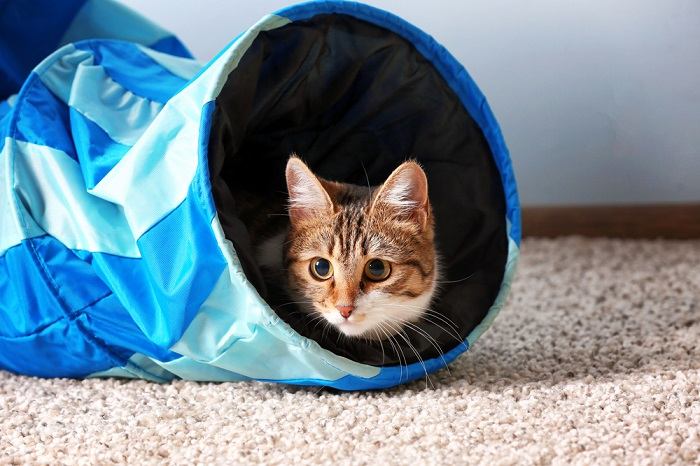
If you choose to keep your cat indoors, you can fulfill their needs with a bit of planning.
It can be difficult to balance the needs, wants, and desires of your adventurous pet with the very real responsibility of keeping them safe. There are both benefits and disadvantages to keeping your pet indoors, but if your cat is very distressed and wants to go outside there are some safer options than allowing them to roam.
It is also well worth double checking that there is not a completely different reason for the sudden vocalization, as some behavioral and medical problems can present this way.
Also Read: The 7 Best Healthy Cat Foods For Indoor Cats
Frequently Asked Questions
Why is my cat so desperate to go outside?
Cats like the outdoors for the exercise, enrichment, and freedom to express natural behaviors. If your cat wants to get out, these needs might not be being fulfilled at home, so additional enrichment and active play may help.
How do I get my cat to stop wanting to go outside?
Cats need both physical and mental stimulation, and the ability to express natural behaviors such as play, scratching, and scent marking. Provide these needs in your home with plenty of active play, puzzle feeders, cat trees, and scratching posts to keep your cat satisfied inside.
Do cats need to go outside to be happy?
Cats can gain benefits from being outdoors, such as more exercise and mental stimulation. These can be provided in a home environment too but requires plenty of active play, and additional enrichment such as cat trees, scratching posts, and puzzle feeders.

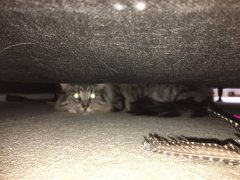
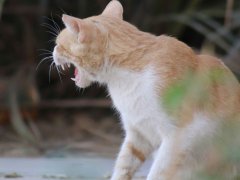





I have a question about a behavior that really upsets me to tears:
I have 4 male cats, 2,2,4,15 years old. The 3 younger cats are constantly chasing, jumping on, and biting my senior cat. I assume it is a natural herding technique of the weakest link but it breaks my heart and hurts my arthritic senior. What can I do to stop this. They love him one minute with baths and kisses and the next minute they are attacking. It is completely stressing him. Thank you so very much for your help.
Hi Pamela,
To stop the younger cats from harassing your senior, create safe spaces for him using baby gates, elevated perches, or separate areas where he can retreat, and redirect their energy with interactive play to reduce aggression. Supervise interactions, reward positive behavior with treats, and consult a vet or behaviorist to address potential underlying issues like redirected aggression or stress in the group dynamic.